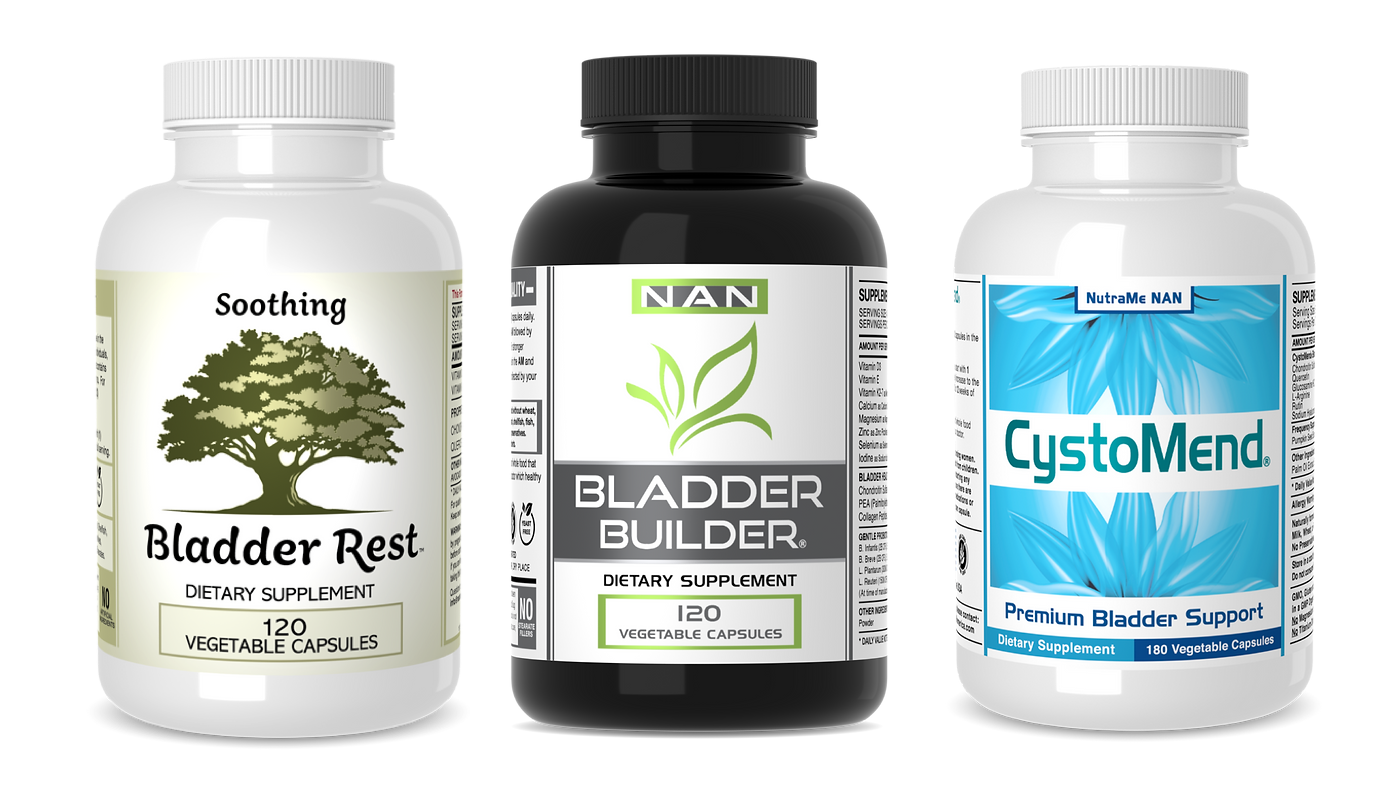Here at the ICN offices, we receive phone calls daily from women diagnosed with IC later in life who feel lost and alone. For many of you, your symptoms began suddenly with urinary frequency, urgency and pain, especially as your bladder filled with urine. And, suddenly, you couldn’t sleep through the night. Working and driving became much more difficult. Naturally, you assumed that you had a bladder infection but the urine tests came back negative. Antibiotics didn’t work. Typical bladder therapies didn’t help much. Eventually, some doctor suggested that you had interstitial cystitis, an incurable bladder disease. Devastated? You bet. But if your symptoms began suddenly during your 40’s, 50’s or 60’s, your symptoms may be the result of estrogen atrophy, aka the genitourinary syndrome of menopause (GSM), and it IS treatable.
The Bladder Estrogen Connection
Think about the bladder for a moment. It’s the only organ in the human body designed to hold toxic waste. How can the bladder hold ammonia, urea and other toxic bi-products without becoming injured? Your bladder is like your mouth. It is a hollow organ covered with a very thick coating of mucus. It’s wet and slippery on the inside, just like the vulva and vagina. This “mighty mucus” acts as a barrier and protects the more vulnerable bladder cells beneath. Unfortunately, it is also estrogen dependent. When you are young and have lots of estrogen, you have a thick, healthy coating. As you age and your estrogen levels drop, it becomes thinner and unable to protect your bladder tissue as well. This is not a disease. This is estrogen atrophy. One study found that 20% of postmenopausal women have severe urgency and almost 50% had stress incontinence.(1) The risk of UTI also increases dramatically.
A GSM Bladder is Easily Irritated
Essentially, the GSM patient is similar to a chemical injury patient. Your bladder can’t protect itself as well and is being irritated, often by something that you have enjoyed for years, such as that cherished cup of coffee in the morning, sweet tea or soda in the afternoon or that glass of wine after dinner. Even a simple multivitamin can trigger days, weeks if not months of pain and discomfort. Avoiding foods and drinks that are higher in acids and alcohol can reduce pain dramatically as you try treatments that can help improve your bladder health.
GSM Treatments
Millions of women use a topical estrogen cream safely to keep their skin healthy “down there.”(2) When you give that skin estrogen, it becomes thicker and more moist. Many suggest that this will become a life-long therapy because, as we know, dry skin is painful and makes intimacy very difficult. Yet, even with estrogen use, those tissues will never be the same as they were when you were in your 20’s and 30’s.
For women struggling with more intense urinary symptoms related to GSM, conventional treatments that provide a coating effect for the bladder makes sense. Unfortunately, Elmiron® (the only FDA approved oral medication for IC/BPS) is now associated with retinal disease and could lead to blindness.(3) But there are other, less risky options. The American Urology Association Guidelines for the Diagnosis and Treatment of IC/BPS suggests that patients try OTC neutraceuticals (aka supplements) first.(4)
OTC Supplements With Chondroitin
In 2004, Dr. Theoharis Theoharides (Tufts University) was the first to wonder if chondroitin sulfate and sodium hyaluronate, both building blocks of the bladders’ GAG layer, would benefit IC/BPS patients when taken orally. In a study of 252 IC/BPS patients who took four Cystoprotek® capsules per day, a significant improvement in symptoms was found, particularly in patients with more severe symptoms. (5) Chondroitin sulfate appears to be the most important ingredient as it is directly involved in “bladder barrier function.” (6)
In the 20 years since CystoProtek® was released, several newer OTC supplements have been developed that add yet more methods of action to help reduce symptoms. Bladder Builder® is the most dynamic product on the market today and includes chondroitin for the bladder wall, quercetin for an antihistaminic effect, beneficial probiotics for the GUT and the addition of palmitoylethanolamide (PEA) for the reduction of pain.(7) In a one year follow up study in 2020, 60% of the patients using Bladder Builder reported less pain and fewer flares with 21% reporting that they were pain free, 33% reporting that they were 50% better, 22% reporting that they were 25% better. (8)
Chondroitin supplements that we believe are worth your consideration as you try to take control of your bladder health:
(1) Bladder Rest® is a good starting formula, especially for patients who are more sensitive to ingredients. It contains chondroitin sulfate, L-Arginine, quercetin and L-citrulline in an avocado oil base.
(2) CystoMend® is a stronger chrondroitin, glucosamine formula with the addition of sodium hyaluronate and pumpkin seed extract for additional GAG layer support. This product does contain shellfish and pineapple and should be avoided for those with allergies or sensitivities.
(3) Bladder Builder® is the most innovative chondroitin product on the market with the addition of PEA for pain support, probiotics for the gut and collagen.
(4) CystoProtek® is the original formulation of chondroitin, hyaluronate and quercetin in an olive pomace oil base. This product does use porcine (pork) capsules.
Skin Health
As the skin dries, it becomes much more sensitive. Many women struggle with what we call “urine burn”… as if their urine is so hot that it is burning their vulva during urination. That hot sensation is associated with dryness. Again, the use of a topical estrogen is usually suggested. That said, many women have also found help using V-Magic®, an all natural skin cream that protects and calms our tender skin to be quite helpful. Learn more!
UTI Prevention
With the loss of estrogen and changes in pH associated with aging, our body becomes more vulnerable to infection. Two confirmed UTI in six months or three in a year, places that patient in the recurring UTI diagnosis. Of course, estrogen therapy to improve skin health and antibiotics for the treatment of active infections are essential. There are, however, some OTC supplements that might help reduce the risk of UTI. PRVNT® contains 40mg PAC combined with D-mannose and probiotics. While the PAC’s are derived from cranberry juice, known to terrify patients with a sensitive bladder, PAC’s are not overly acidic and usually well tolerated.
Other Supplements
Peaora®
After a study of palmitoylethanolamide and IC found that 87% of IC patients experienced a significant reduction in their pain at 3 months, many physicians were excited to have an OTC product that could help that did not carry the same risks as opioid medication. (8) PEA was found to be remarkably well tolerated and no adverse events were reported in the IC study. PEAORA Poly 500 has grown in popularity, especially for patients who struggle with nerve sensitivity.
AloePath®
Just as aloe can be used to soothe a sunburn, some patients have found aloe soothing to their bladder. AloePath® uses an organic aloe vera gel that is anthraquinone free, combined with palmitoylethanolamide (PEA) to enhance its pain reducing effect.
Bladder Smart®
Because multivitamins contain high levels of Vitamin C in the form of ascorbic acid, they are well known for irritating sensitive bladders and triggering IC flares. Bladder Smart® is a low acid multivitamin that is working wonders for those of us who have struggled with big name brands and products. In addition to using calcium ascorbate, a far more tolerable source of Vitamin C, it also adds calcium glycerophosphate which also reduces pH of urine.
References
- The 2022 hormone therapy position statement of the North American Menopause Society. Menopause 2022 Jul 1;29(7):767-794
- Vaginal estrogen safe for post-menopause women. UCI Health. March 12, 2019
- Pearce WA. Pigmentary Maculopathy Associated with Chronic Exposure to Pentosan Polysulfate Sodium. Ophthalmology. 2018 May 22
- Osborne J. New IC/BPS guidelines released in the USA. IC Network. May 23, 2022
- Theoharides TC, et al. Treatment of refractory interstitial cystitis/painful bladder syndrome with CystoProtek–an oral multi-agent natural supplement. Can J Urol 2008 Dec;15(6):4410-4
- Jannsen D, et al. The Distribution and Function of Chondroitin Sulfate and Other Sulfated Glycosaminoglycans in the Human Bladder and Their Contribution to the Protective Bladder Barrier. The Journal of Urology November 2012 189(1)
- Gubbiotti M, et al. IC/BPS: The Use of Palmitoylethanolamide / Polydatin as Add-On therapy in Pain Resistant Patients. AUA 2019. Poster #MP47-13
- Osborne J. Bladder Builder One Year Follow Up Data – 60% of active users report less pain and fewer flares. IC Network. July 22, 2020


